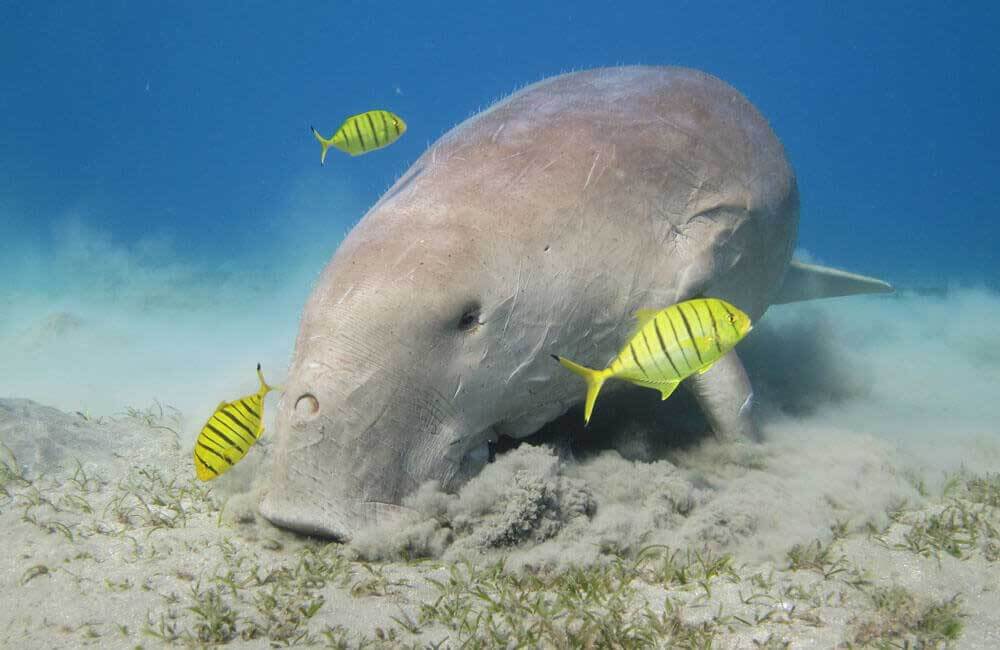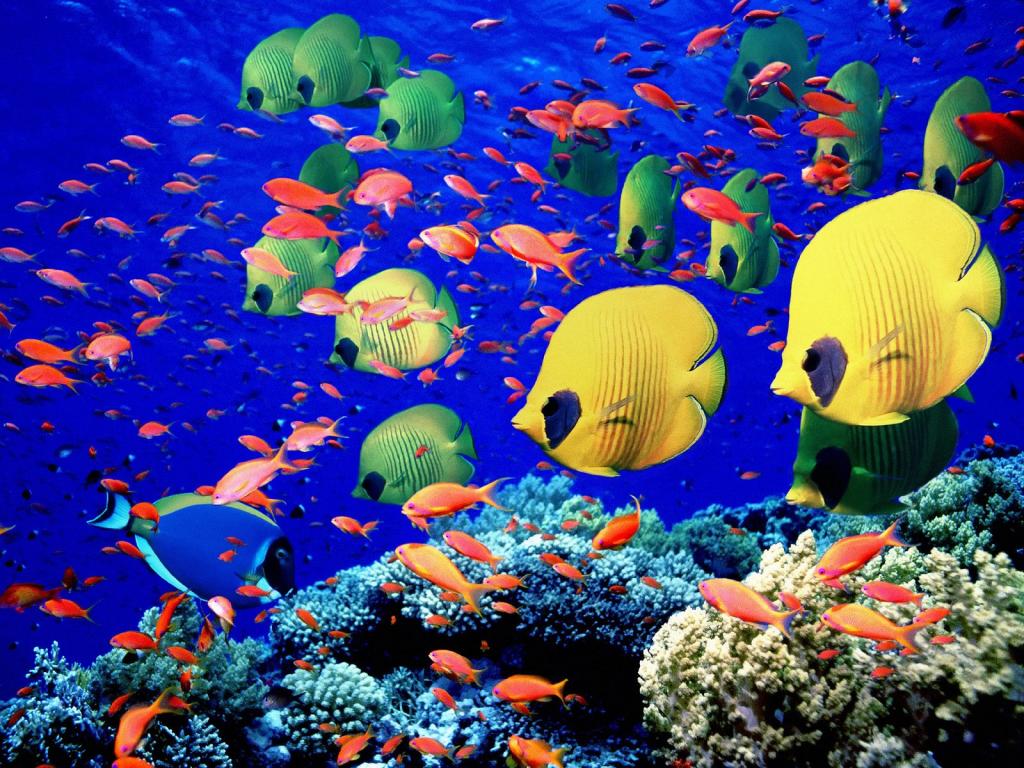The Red Sea is a unique and vibrant marine ecosystem, renowned for its rich biodiversity and stunning underwater landscapes. This body of water, nestled between Africa and Asia, is home to a plethora of marine species, many of which are found nowhere else on Earth. Let’s dive into the fascinating world of the Red Sea’s marine life.
Coral Reefs: The Rainforests of the Sea
The Red Sea boasts some of the most spectacular coral reefs in the world. These reefs cover an area of more than 1,500 kilometers and are home to over 300 species of coral1. Coral reefs are often referred to as the “rainforests of the sea” due to their incredible biodiversity. They provide food and shelter for a myriad of marine organisms, creating a complex and interdependent ecosystem.

Coral reefs in the Red Sea are primarily fringing reefs, which means they are directly attached to the shore. These reefs are supported by a wide reef flat or “back reef,” which can extend up to 500 meters in some areas1. The back reef often features lagoons and offers limited recreational opportunities like swimming, wading, or kite surfing. The reef topography is remarkable, with swim-throughs, tunnels, and vast coral gardens that are considered some of the best examples of coral reef structures in the world.
Fish Species: A Kaleidoscope of Colors
The Red Sea is home to over 1,200 species of fish, with around 10% of these species being endemic, meaning they are found nowhere else in the world. The abundance of coral reefs provides an ideal habitat for juvenile fish to grow and thrive into adulthood. The vibrant colors and diverse shapes of these fish make the Red Sea a paradise for divers and snorkelers.
Some of the most iconic fish species in the Red Sea include:
Clownfish: Known for their symbiotic relationship with sea anemones, clownfish are a favorite among divers.
Butterflyfish: These brightly colored fish are easily recognizable by their distinctive patterns and are often seen swimming in pairs.
Angelfish: With their striking colors and graceful movements, angelfish are a highlight of any dive.
Parrotfish: Named for their beak-like mouths, parrotfish play a crucial role in maintaining the health of coral reefs by grazing on algae.
Lionfish: These venomous fish are known for their beautiful, fan-like fins and are a common sight in the Red Sea.

Sharks and Rays: The Majestic Predators
The Red Sea is also home to a variety of shark and ray species. Sharks are often seen as the apex predators of the ocean, and their presence is a sign of a healthy marine ecosystem. Some of the shark species found in the Red Sea include:
Oceanic Whitetip Shark: Known for their curiosity and slow swimming, these sharks are often seen in shallow waters and are a favorite among divers.
Hammerhead Shark: These distinctive sharks are known for their unique head shape and are often seen in schools.
Grey Reef Shark: Commonly found around coral reefs, these sharks are known for their territorial behavior.
Rays are another fascinating group of marine animals found in the Red Sea. The Blue Spotted Stingray is one of the most common species and is easily recognizable by its bright blue spots. These rays often lie on sandy bottoms, flicking sand over themselves as camouflage. They feed on mollusks and crabs and are generally not aggressive, but their venomous spines can cause intense pain if stepped on.
Marine Mammals: The Gentle Giants
The Red Sea is home to several species of marine mammals, including dolphins, dugongs, and whales. Spinner dolphins are one of the most commonly seen species and are known for their acrobatic displays. These playful creatures often travel in large pods and are a delight to watch.
Dugongs, also known as sea cows, are another fascinating marine mammal found in the Red Sea. These gentle herbivores graze on seagrass beds and are often seen in shallow coastal waters. Dugongs are considered vulnerable to extinction, and efforts are being made to protect their habitats.
Whales are less commonly seen in the Red Sea, but several species, including the Bryde’s whale and the humpback whale, have been spotted in these waters. These majestic creatures are a rare sight and a highlight for any lucky observer.
Invertebrates: The Hidden Gems
In addition to fish and marine mammals, the Red Sea is home to a diverse array of invertebrates. These creatures, which lack a backbone, play a crucial role in the marine ecosystem. Some of the most notable invertebrates in the Red Sea include:
Octopuses and Cuttlefish: These intelligent cephalopods are known for their ability to change color and texture to blend in with their surroundings. They are fascinating to watch and are often seen hunting for prey.
Nudibranchs: These colorful sea slugs are a favorite among underwater photographers. Their vibrant colors and intricate patterns make them a highlight of any dive.
Sponges: These simple organisms filter water to feed and are an important part of the reef ecosystem. They come in a variety of shapes and colors and provide habitat for many other marine species.
Crustaceans: The Red Sea is home to a variety of crustaceans, including crabs, lobsters, and shrimp. These creatures play a crucial role in the food web and are often seen scurrying along the reef.
Conservation Efforts: Protecting a Fragile Ecosystem
The Red Sea’s marine ecosystem is incredibly diverse and vibrant, but it is also fragile and vulnerable to human impacts. Overfishing, pollution, and climate change are some of the major threats facing this unique environment. Efforts are being made to protect and conserve the Red Sea’s marine life through the establishment of marine protected areas and national parks.
One of the key conservation initiatives in the Red Sea is the protection of coral reefs. Coral reefs are particularly sensitive to changes in water temperature and quality, and efforts are being made to reduce pollution and manage fishing practices to protect these vital ecosystems. Additionally, there are ongoing efforts to raise awareness about the importance of marine conservation and to promote sustainable tourism practices.
Conclusion
The Red Sea is a treasure trove of marine biodiversity, offering a glimpse into a vibrant and dynamic underwater world. From the colorful coral reefs to the majestic sharks and rays, the Red Sea is home to an incredible array of marine life. Conservation efforts are crucial to protect this fragile ecosystem and ensure that future generations can continue to enjoy its beauty and diversity.
Whether you are a diver, snorkeler, or simply a lover of marine life, the Red Sea offers an unparalleled experience. Its unique and diverse marine ecosystem is a testament to the wonders of the natural world and a reminder of the importance of protecting our oceans.
























